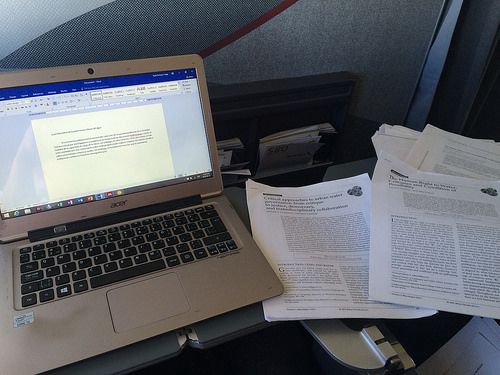The academic world demands a specific style of communication: clear, concise, and supported by evidence. Writing an academic paper can be daunting, especially for those new to the process. This labyrinth of research, organization, and writing can feel overwhelming, leaving you wondering where to even begin. Fear not, for this guide will equip you with the tools and strategies to navigate the complexities of crafting compelling academic papers.
Step One: Understanding the Assignment
The foundation of any successful paper lies in a thorough understanding of the assignment. Before you dive into research, take time to dissect the prompt:
- Identify the topic: What specific area of study are you focusing on?
- Determine the type of paper: Is it an argumentative essay, a literature review, a case study, or something else?
- Understand the required length and format: Pay close attention to word count, citation style, and any specific formatting guidelines.
- Identify the key objectives: What are the main points the professor expects you to address? What questions should your paper answer?
Step Two: Research and Information Gathering
Once you understand the assignment, it’s time to embark on your research journey. A robust understanding of the subject matter is crucial for writing a convincing paper. Here’s a breakdown of the research process:
- Start with credible sources: Academic databases like JSTOR, Nursing Papers, PubMed, and Google Scholar are your allies. Utilize keywords and Boolean operators to refine your search.
- Evaluate sources critically: Not all sources are created equal. Consider the author’s credibility, the source’s reputation, and the publication date. Look for evidence of bias or agenda.
- Take thorough notes: Document your sources carefully, including author, title, publication date, and page numbers. This will make referencing easier later.
- Organize your research: Group similar sources together and create a clear structure for your notes. This will help you develop a coherent argument.
Step Three: Building a Strong Thesis Statement
Your thesis statement is the heart of your paper. It’s a concise and focused statement that presents your argument and sets the direction for your entire paper. A good thesis statement is:
- Specific and focused: Avoid broad or vague claims.
- Debatable: It should present a claim that can be supported with evidence.
- Clear and concise: Clearly express your main argument in a single sentence.
- Original: Offer a unique perspective or approach to the topic.
Step Four: Crafting a Logical Structure
A well-organized paper allows readers to follow your argument easily. Consider the following structure:
- Introduction: Engage the reader with a hook, provide background information, and introduce your thesis statement.
- Body paragraphs: Each paragraph should focus on a single idea that supports your thesis. Start with a topic sentence, provide evidence, and explain the connection to your argument.
- Conclusion: Restate your thesis, summarize your key points, and leave a lasting impression on the reader.
Step Five: Writing and Revising
Now comes the fun part – writing! But don’t rush.
- Start with an outline: Break down your paper into sections and subheadings. This provides a roadmap for your writing.
- Write clearly and concisely: Use strong verbs and precise language. Avoid jargon or overly technical terminology unless essential.
- Support your claims with evidence: Back up your arguments with specific examples, statistics, and expert opinions.
- Cite your sources correctly: Adhere to the specified citation style (MLA, APA, Chicago, etc.).
Step Six: Seek Feedback and Polish Your Paper
Once you’ve finished writing, it’s essential to receive feedback and refine your work.
- Get feedback from peers: Have classmates or friends read your paper and provide constructive criticism.
- Consider professional help: If you’re struggling with certain aspects of writing, don’t hesitate to seek help from writing centers or tutoring services. Many universities offer assistance, and online resources like nursing paper writing help can be invaluable.
- Proofread carefully: Check for grammatical errors, spelling mistakes, and punctuation errors.
- Edit for clarity and conciseness: Ensure your writing is easy to understand and free from unnecessary wordiness.
Step Seven: The Final Touches
Before submitting your paper, take the following final steps:
- Check for plagiarism: Use plagiarism detection software to ensure your work is original.
- Format correctly: Adhere to all formatting guidelines, including font type, margins, spacing, and page numbers.
- Submit on time: Avoid last-minute panic by submitting your paper well before the deadline.
Writing Effective Academic Papers: Key Takeaways
Writing academic papers is a skill that improves with practice. By following these steps and seeking support when needed, you can confidently navigate the complexities of academic writing and produce impactful, well-researched papers.
- Understanding the assignment is crucial: Take time to fully grasp the expectations and objectives.
- Research effectively: Utilize credible sources and gather information systematically.
- Develop a strong thesis statement: Clearly articulate your argument in a concise and focused way.
- Structure your paper logically: Organize your ideas and evidence in a way that is easy to follow.
- Write clearly and concisely: Use strong verbs and precise language.
- Seek feedback and revise thoroughly: Get input from others and refine your writing for clarity and conciseness.
- Don’t hesitate to seek help: Writing centers, tutoring services, and online resources like nursing paper writing help can provide valuable assistance.
By embracing these strategies, you can confidently embark on your academic writing journey, producing insightful and compelling papers that demonstrate your understanding and critical thinking skills. Remember, the key is to approach the process with a clear plan, a critical mind, and a willingness to seek help when needed.
